Discovering Beauty in the Bayou: Photographing Caddo Lake, Texas
I’m often asked, “Where are you off to next?” I’ve built a bit of a reputation for seeking out beautiful places to photograph. Often, the answer is a familiar one—Glacier National Park, the California Redwoods, or Denali in Alaska, but Caddo Lake Texas?
However, natural beauty isn’t limited to iconic landmarks. Sometimes, I’m drawn to places that most people have never heard of. So when I recently said I was heading to Texas to photograph a swamp, I was met with puzzled looks. A swamp? In Texas? Yep.
Rethinking the Swamp
I just returned from that swamp, and I can honestly say—it shattered my expectations. Like many people, I imagined murky waters, biting insects, and maybe even a swamp monster lurking in the fog. Dangerous wildlife, like snakes and gators, came to mind instantly.
Coming from the Pacific Northwest, I’m used to obvious, lush landscapes. A swamp? That felt foreign. Surprisingly though, it turned out to be one of the most beautiful places I’ve ever photographed.
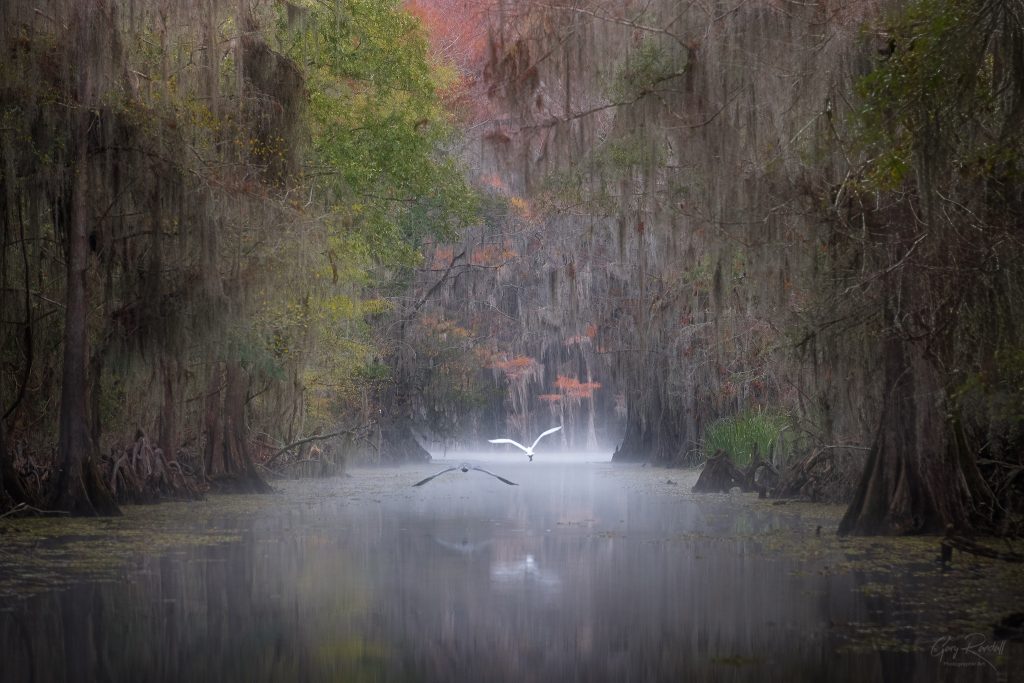
A Visit to Uncertain, Texas
My trip took me to a tiny town along the border of Texas and Louisiana called Uncertain, Texas. And yes—that’s the real name.
Curious about how it got that name, I looked into the town’s history. According to one story, residents in the 1800s submitted a township application and wrote “uncertain” in the blank for the name—since they hadn’t decided yet. The name stuck.
Whatever the origin, it fits. There’s something wonderfully mysterious about this place.
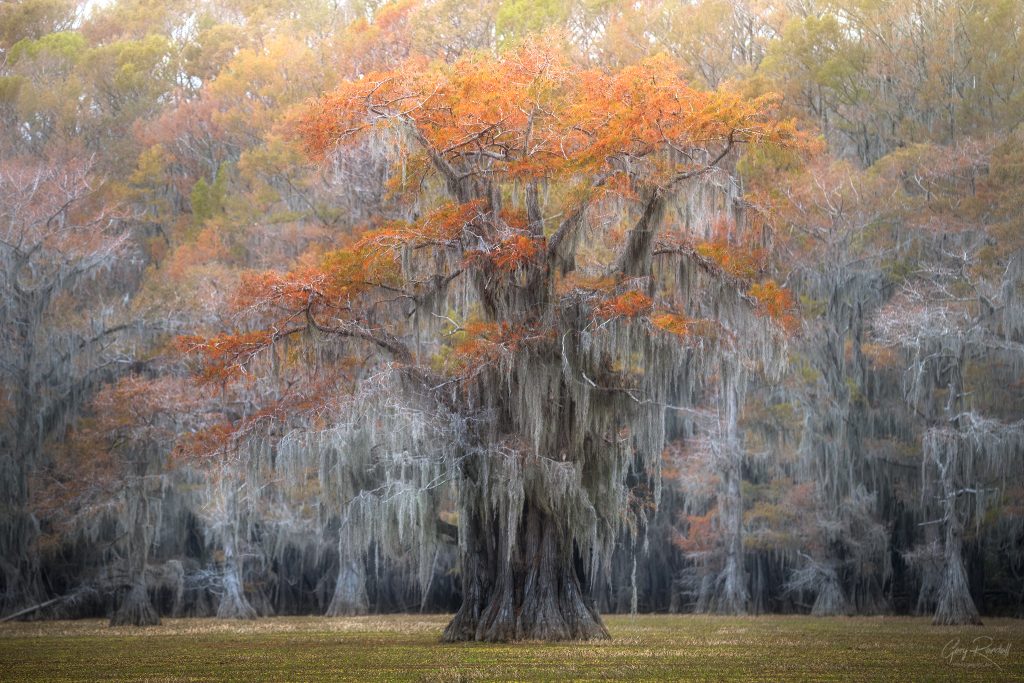
Why Caddo Lake Texas Is Gaining Popularity
I first heard about Caddo Lake through a wave of stunning photos shared on social media. Within a short time, it had gone from an unknown destination to a popular hot spot for photographers.
As Autumn rolls in, so do the colors. The submerged bald cypress trees, wrapped in Spanish moss, glow with fiery reds and oranges. It’s no wonder that more photographers are making their way there. Naturally, I joined the migration.

Leading a Workshop Among the Cypress
My friend and fellow photographer Alyce Bender invited me to co-lead a photography workshop at Caddo Lake. Of course, I said yes immediately.
I arrived a few days early to explore the area and get familiar with the surroundings. That extra time also gave me a chance to meet some of the locals—kind folks who made me feel right at home. I don’t think I’ve ever been called “sir” so often in my life.
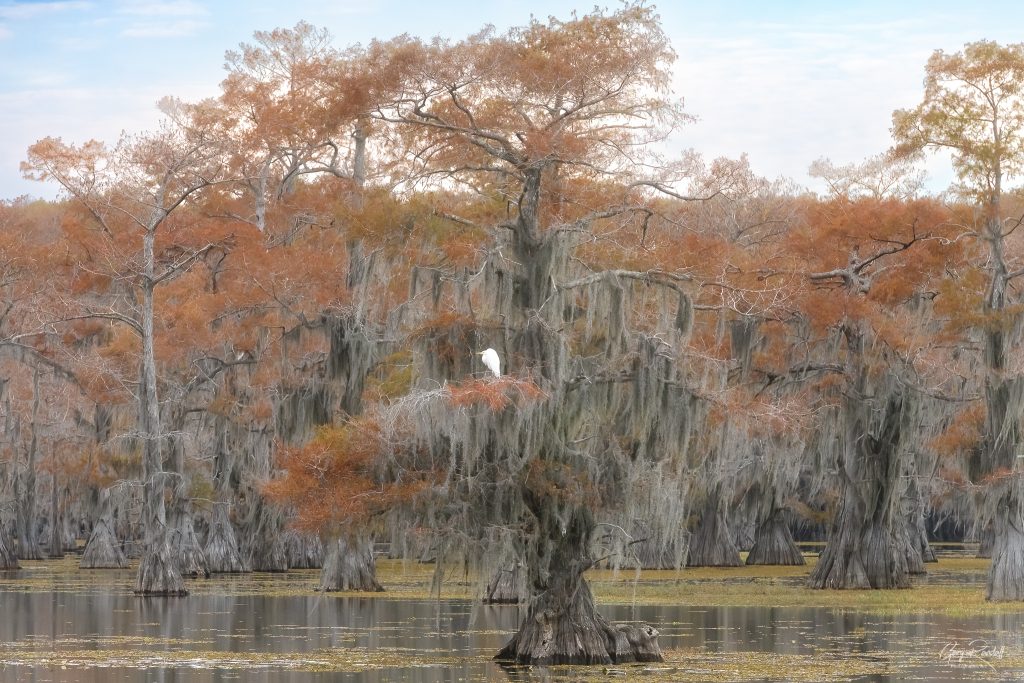
A Landscape Shaped by History
At 60 square miles, Caddo Lake holds the title of Texas’s largest natural lake. Long ago, a massive log raft on the Red River backed up water and flooded the area. That created a waterway for steamboats and helped towns like Jefferson, Texas, thrive.
Eventually, the Army Corps of Engineers removed the raft, and the water drained. This change stopped riverboat traffic and dried out the lake basin. Not long after, a man-made dam restored water to the region—flooding the forests and creating the Caddo Lake we know today.
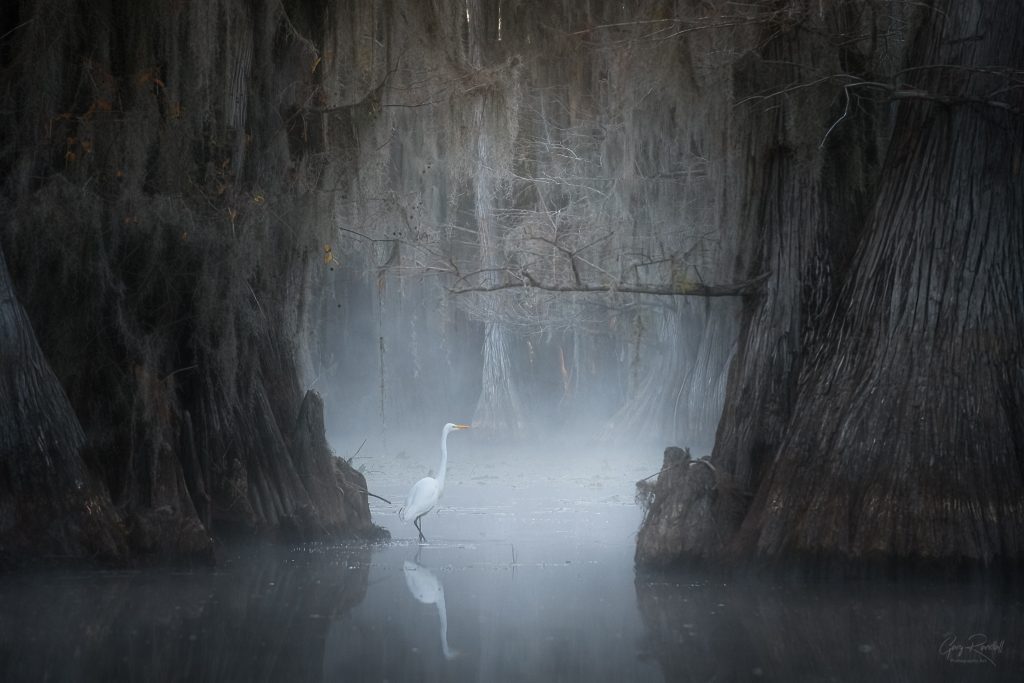
An Ecosystem Full of Life
The towering cypress trees, many over 200 years old, offer refuge to a wide variety of wildlife. Egrets, blue herons, owls, eagles, and kingfishers nest among their branches. Beneath the water’s surface, creatures like otters, beavers, snakes, and alligators thrive.
Fishing is also popular here. The lake holds crappie, largemouth bass, catfish, sunfish, and even paddlefish—a bizarre, prehistoric-looking fish with a long paddle-shaped snout.
Some even claim that Texas Bigfoot roams these swamps. I didn’t run into him, but I definitely heard stories.
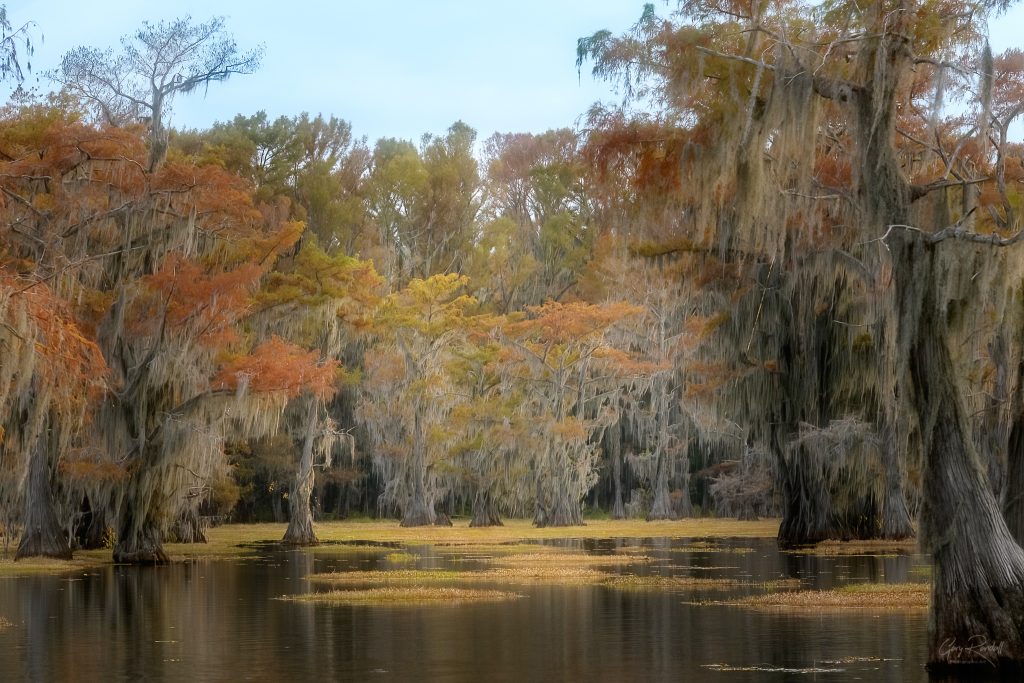
Environmental Challenges
Like many natural places today, Caddo Lake faces some serious threats. At least 44 native species are currently considered rare, threatened, or endangered. Conservation efforts from the U.S. Fish and Wildlife Service are crucial to protecting this unique ecosystem.
Another concern is Giant Salvinia, an invasive aquatic plant that spreads quickly and can suffocate entire stretches of water. Left unchecked, it could devastate the lake’s delicate balance.
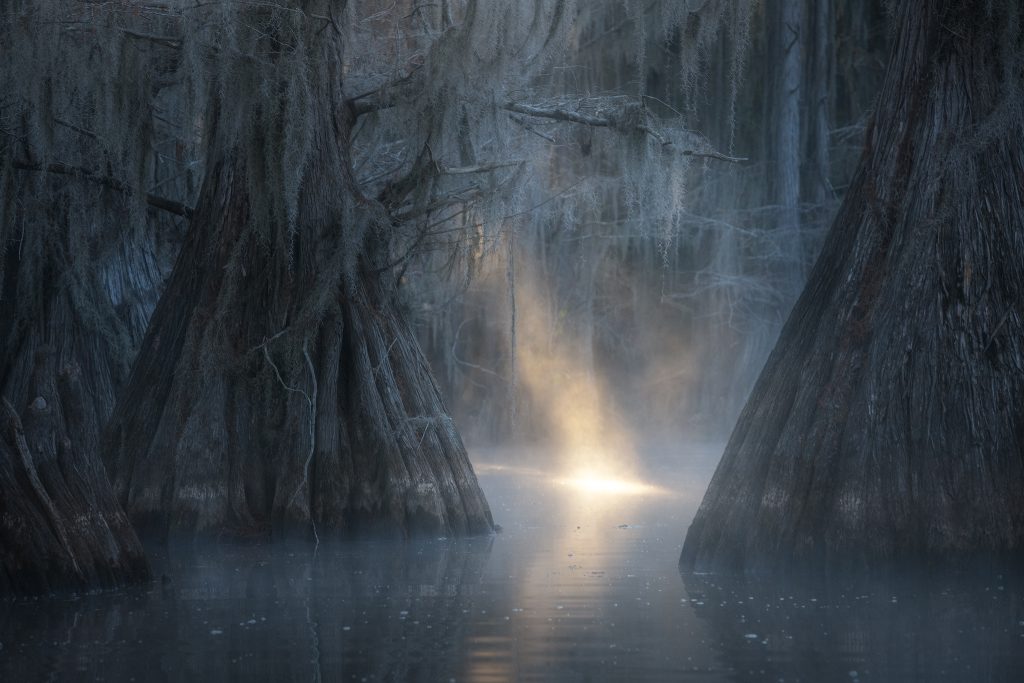
Chasing the Light on the Water
To truly capture the soul of Caddo Lake, you need to get out on the water. That’s why our workshop spent two sunrises and two sunsets aboard pontoon boats, drifting through the Big Cypress Bayou.
We navigated narrow channels surrounded by glowing foliage and birdlife. Egrets, ibis, and even kingfishers became subjects in our frames. The still water created beautiful reflections—some of the best I’ve ever seen.
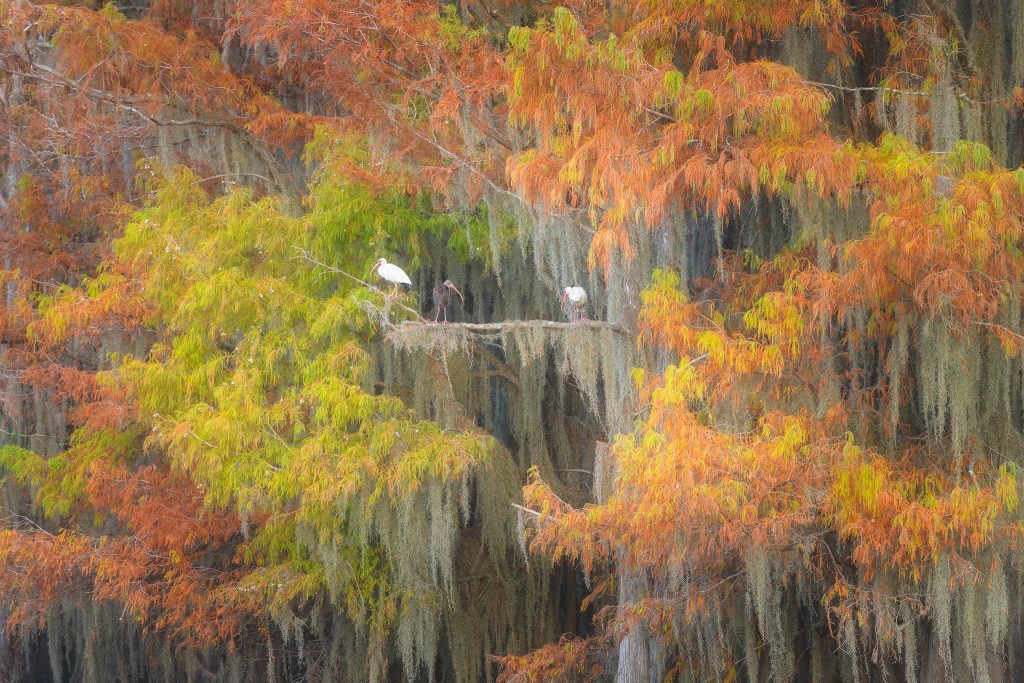
A Culture as Rich as the Landscape
Although I’d heard tales of the bayou before, seeing it for myself was something else entirely. The people who live here have deep roots. You can feel their connection to the land and hear it in the stories they share.
Every place has its own rhythm. In Uncertain, Texas, that rhythm feels older, slower, and somehow more genuine. Through my photography, I hope to share the beauty of this place with others—especially those who’ve never seen a swamp firsthand.

Final Thoughts on Caddo Lake Texas
Before visiting, I wasn’t sure what to expect from a Texas swamp. Now, I can say with confidence: Caddo Lake is one of the most captivating places I’ve ever photographed.
If you’ve overlooked swamps as photography destinations, I encourage you to take a second look. Sometimes, the most unexpected places offer the most powerful experiences.
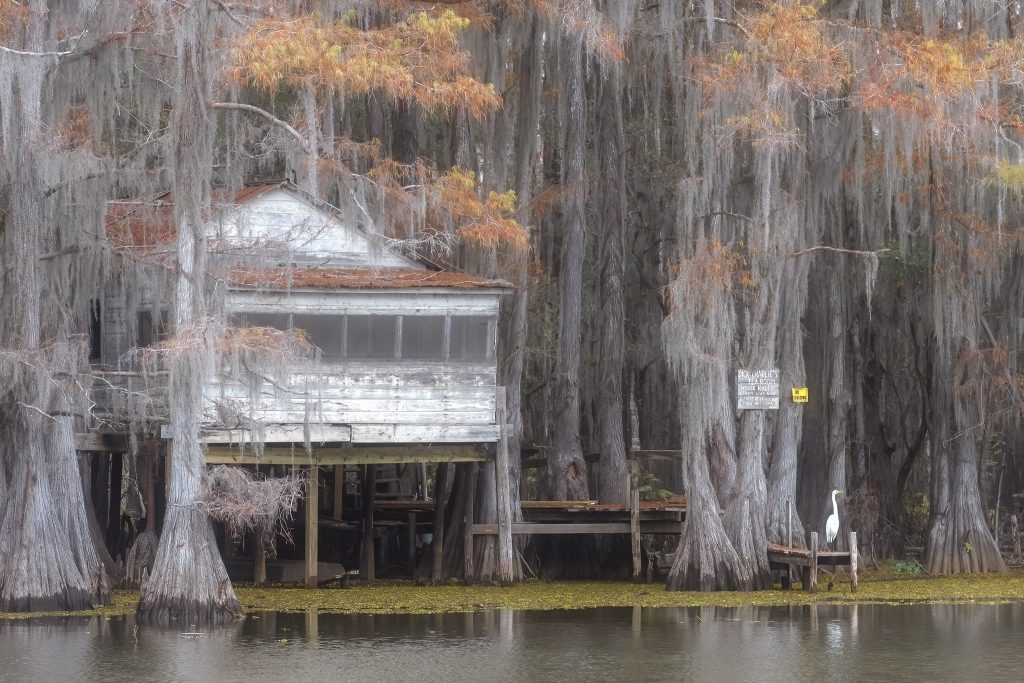
👉 Want to see photos from this trip or learn about upcoming workshops? Visit gary-randall.com

